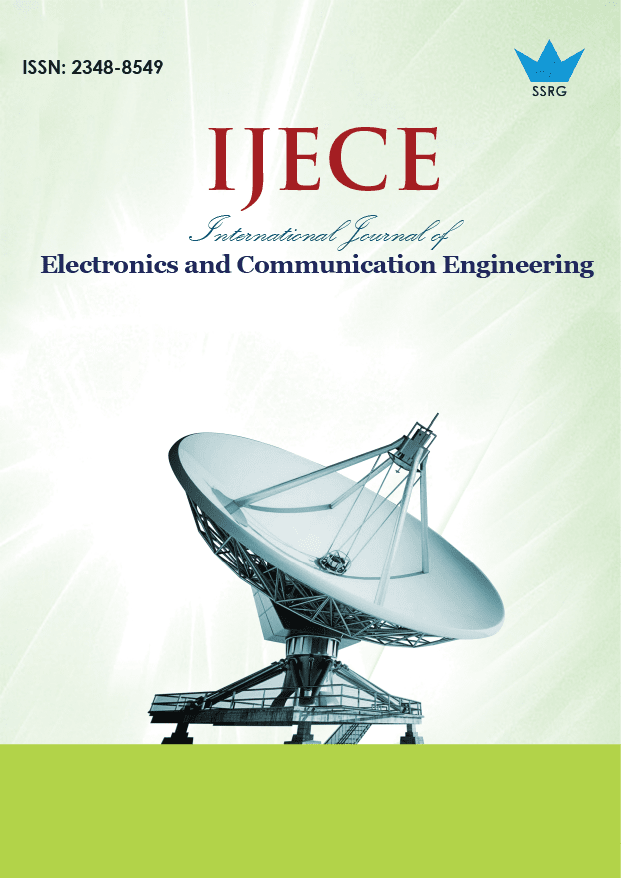Hybrid Deep Learning Model for Software Defect Classification Using Code2Vec and LinkNet-BiLSTM Score Level Fusion

| International Journal of Electronics and Communication Engineering |
| © 2025 by SSRG - IJECE Journal |
| Volume 12 Issue 6 |
| Year of Publication : 2025 |
| Authors : Srinivasa Rao Katragadda, Sirisha Potluri |
How to Cite?
Srinivasa Rao Katragadda, Sirisha Potluri, "Hybrid Deep Learning Model for Software Defect Classification Using Code2Vec and LinkNet-BiLSTM Score Level Fusion," SSRG International Journal of Electronics and Communication Engineering, vol. 12, no. 6, pp. 227-237, 2025. Crossref, https://doi.org/10.14445/23488549/IJECE-V12I6P118
Abstract:
The software package faults stance an important trial, impacting systems’ reliability, functionality, and security. Traditional methods for defect detection, including manual inspections and static tools, are often insufficient for handling large, complex codebases. Current progress in ML and DL provides more robust solutions by identifying complex patterns within data. It presents a hybrid model that combines Code2Vec for feature extraction, Improved LinkNet for spatial data processing, and Bi-LSTM for sequential pattern analysis, leveraging score-level fusion to improve software defect classification. Code2Vec transforms unstructured source code into dense vector representations, capturing critical semantic and syntactic features. Improved LinkNet excels in extracting high-level structural features, while Bi-LSTM captures long-term dependencies in code sequences. The proposed score-level fusion integrates the outputs of these models to harness their complementary strengths, reducing noise sensitivity and enhancing accuracy. The fused scores are passed to a soft-max classifier to foresee a given snippet code that is fault-motionless or non-defect-prone. The final output classifies the software defect into specific categories, if applicable, based on the trained dataset. It demonstrates that the hybrid model outperforms metrics, accuracy, precision, recall, and F1 scores, existing methods in package fault prophecy. The study also highlights the significance of hyperparameter tuning and training large, labelled datasets. This research contributes to scalable, efficient defect detection methods that address real-world challenges in software development, setting a foundation for future improvements in predictive analytics and automated software quality assurance. The proposed model, implemented in Python, enhances classification performance, achieving an accuracy of 92%.
Keywords:
Software defect classification, Deep learning, Code2Vec, Bi-LSTM, Score-level fusion.
References:
[1] Kun Zhu et al., “Software Defect Prediction based on Enhanced Metaheuristic Feature Selection Optimization and a Hybrid Deep Neural Network,” Journal of Systems and Software, vol. 180, 2021.
[CrossRef] [Google Scholar] [Publisher Link]
[2] Ning Li, Martin Shepperd, and Yuchen Guo, “A Systematic Review of Unsupervised Learning Techniques for Software Defect Prediction,” Information and Software Technology, vol. 122, pp. 1-18, 2020.
[CrossRef] [Google Scholar] [Publisher Link]
[3] Wei Zheng et al., “Interpretability Application of the Just-in-Time Software Defect Prediction Model,” Journal of Systems and Software, vol. 188, 2022.
[CrossRef] [Google Scholar] [Publisher Link]
[4] Hao Wang, Weiyuan Zhuang, and Xiaofang Zhang, “Software Defect Prediction based on Gated Hierarchical LSTMs,” IEEE Transactions on Reliability, vol. 70, no. 2, pp. 711-727, 2021.
[CrossRef] [Google Scholar] [Publisher Link]
[5] Fanqi Meng, Wenying Cheng, and Jingdong Wang, “Semi-Supervised Software Defect Prediction Model based on Tri-Training,” KSII Transactions on Internet and Information Systems, vol. 15, no. 11, pp. 4028-4042, 2021.
[CrossRef] [Google Scholar] [Publisher Link]
[6] Elena N. Akimova et al., “A Survey on Software Defect Prediction using Deep Learning,” Mathematics, vol. 9, no. 11, pp. 1-14, 2021.
[CrossRef] [Google Scholar] [Publisher Link]
[7] Geanderson Esteves et al., “Understanding Machine Learning Software Defect Predictions,” Automated Software Engineering, vol. 27, pp. 369-392, 2020.
[CrossRef] [Google Scholar] [Publisher Link]
[8] Amirabbas Majd et al., “SLDeep: Statement-level Software Defect Prediction using Deep-Learning Model on Static Code Features,” Expert Systems with Applications, vol. 147, pp. 1-14, 2020.
[CrossRef] [Google Scholar] [Publisher Link]
[9] Fei Deng et al., “Accelerating Magnetotelluric Forward Modeling with Deep Learning: Conv-BiLSTM and D-LinkNet,” Geophysics, vol. 88, no. 2, pp. E69-E77, 2023.
[CrossRef] [Google Scholar] [Publisher Link]
[10] Emin Borandag, “Software Fault Prediction Using an RNN-Based Deep Learning Approach and Ensemble Machine Learning Techniques,” Applied Sciences, vol. 13, no. 3, pp. 1-21, 2023.
[CrossRef] [Google Scholar] [Publisher Link]
[11] Iqra Batool, and Tamim Ahmed Khan, “Software Fault Prediction using Deep Learning Techniques,” Software Quality Journal, vol. 31, pp. 1241-1280, 2023.
[CrossRef] [Google Scholar] [Publisher Link]
[12] Wahaj Alkaberi, and Fatmah Assiri, “Predicting the Number of Software Faults using Deep Learning,” Engineering, Technology & Applied Science Research, vol. 14, no. 2, pp. 13222-13231, 2024.
[CrossRef] [Google Scholar] [Publisher Link]
[13] H. Das et al., “Enhancing Software Fault Prediction Through Feature Selection With Spider Wasp Optimization Algorithm,” IEEE Access, vol. 12, pp. 105309-105325, 2024.
[CrossRef] [Google Scholar] [Publisher Link]
[14] Sonika Chandrakant Rathi et al., “Empirical Evaluation of the Performance of Data Sampling and Feature Selection Techniques for Software Fault Prediction,” Expert Systems with Applications, vol. 223, 2023.
[CrossRef] [Google Scholar] [Publisher Link]
[15] Fengyu Yang et al., “Interpretable Software Defect Prediction Incorporating Multiple Rules,” 2023 IEEE International Conference on Software Analysis, Evolution and Reengineering (SANER), Taipa, Macao, pp. 940-947, 2023.
[CrossRef] [Google Scholar] [Publisher Link]
[16] Ke Shi et al., “PathPair2Vec: An AST Path Pair-Based Code Representation Method for Defect Prediction,” Journal of Computer Languages, vol. 59, 2020.
[CrossRef] [Google Scholar] [Publisher Link]
[17] Abhishek Chaurasia, and Eugenio Culurciello, “Linknet: Exploiting Encoder Representations for Efficient Semantic Segmentation,” 2017 IEEE Visual Communications and Image Processing (VCIP), St. Petersburg, FL, USA, pp. 1-4, 2017.
[CrossRef] [Google Scholar] [Publisher Link]
[18] Ahmed Bahaa Farid et al., “Software Defect Prediction using Hybrid Model (CBIL) of Convolutional Neural Network (CNN) and Bidirectional Long Short-Term Memory (Bi-LSTM),” PeerJ Computer Science, vol. 7, pp. 1-22, 2021.
[CrossRef] [Google Scholar] [Publisher Link]

 10.14445/23488549/IJECE-V12I6P118
10.14445/23488549/IJECE-V12I6P118